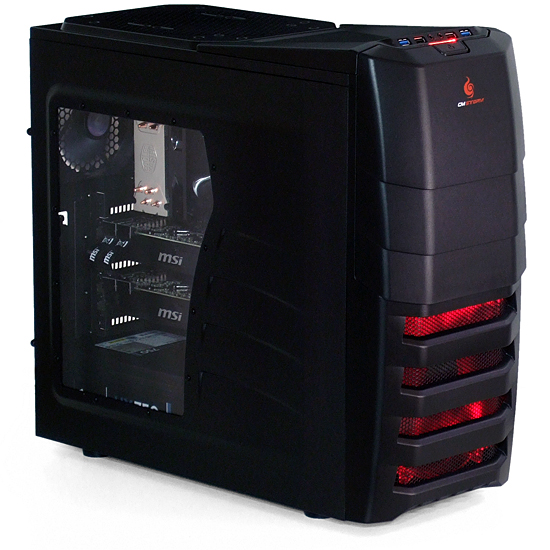System Builder Marathon, Q4 2012: $2,000 Performance PC
From CPU To GPU: Shifting The Balance
System Builder Marathon, December 2012: The Articles
Here are links to each of the four articles in this quarter’s System Builder Marathon (we’ll update them as each story is published). And remember, these systems are all being given away at the end of the marathon.
To enter the giveaway, please fill out this SurveyGizmo form, and be sure to read the complete rules before entering!
Day 1: The $500 Gaming PC
Day 2: The $1,000 Enthusiast PC
Day 3: The $2,000 Performance PC
Day 4: Performance And Value, Dissected
Introduction
The goal of our highest-priced build has always been to perform exceptionally across our entire benchmark suite. We break the results down into a final score, which is weighted 30% game, 60% application, and 10% storage performance. That balance gives us a number of different ways to spend our money, from dual-socket workstation platforms to triple-GPU gaming rigs.
When we try to optimize for processor performance, the biggest issue we encounter is a lack of scaling in many apps. A great number of the video transcoding and office productivity applications we run are designed specifically for professionals. But the speed-up we see in most of them rarely justifies the cost of more complex CPUs.
We could easily build a machine able to tackle every workload with exceptional proficiency by sinking lots of money into graphics and host processing, but real-world buyers must juggle available funds and performance goals. Today's $2,000 machine is our latest attempt at a real-world build.
Here's the thing, though. There's really no such thing as "too slow" when it comes to converting a movie file or running a document through an optical character recognition application. But it's very apparent when your favorite game isn't playable. Last quarter, we put much of our $2,000 ceiling into a heavy-hitting CPU. This time around, we're aiming to make the most of that 30% gaming score with a more capable graphics configuration.
| Q4 2012 $2,000 PC Components | ||
|---|---|---|
| Processor | Intel Core i7-3770K (Ivy Bridge): 3.5 GHz Base Clock Rate, 3.9 GHz Maximum Turbo Boost, 8 MB Shared L3 Cache | $320 |
| Graphics | 2 x MSI R7970-2PMD3GD5/OC: Radeon HD 7970 3 GB, In CrossFire | $780 |
| Motherboard | Gigabyte GA-Z77X-D3H: LGA 1155, Intel Z77 Express | $150 |
| Memory | G.Skill F3-1600C8D-8GAB: DDR3-1600 C8, 4 GB x 2 (8 GB) | $50 |
| System Drive | Mushkin MKNSSDCR240GB-DX: 240 GB, SATA 6Gb/s SSD | $175 |
| Storage Drive | Seagate Barracuda 7200.11 ST31500341AS: 1.5 TB, 7200 RPM Hard Drive | $80 |
| Optical | Asus BW-12B1ST: 12x BD-R, 16x DVD±R, 2x BD-RE | $80 |
| Case | Cooler Master Storm Enforcer SGC-1000-KWN1 | $85 |
| Power | Corsair HX750: ATX12V V2.3 80 PLUS Gold | $145 |
| CPU Cooler | Cooler Master Hyper 212 Evo RR-212E-20PK-R2 | $35 |
| Row 10 - Cell 0 | Total Cost | $1,900 |
There's a good chance that you looked at the image above and thought, "This quarter's high-end build isn't just graphics-heavy, it also looks like a gaming PC." We still insist that this is simply a high-end, general-purpose PC with a special emphasis on gaming. The fact that Cooler Master's case is oozing red is simply a matter of cost-cutting on a build that ran $1,985 on the day we placed our order, using an affordable chassis to meet our quality demands. The fact that all of these parts sell for $1,900 today means our value comparison should look even more attractive...if we made smart decisions.
Current page: From CPU To GPU: Shifting The Balance
Next Page Graphics, CPU, And MotherboardGet Tom's Hardware's best news and in-depth reviews, straight to your inbox.


